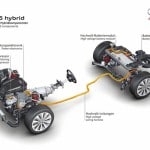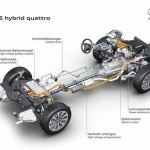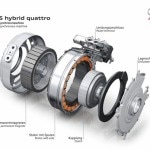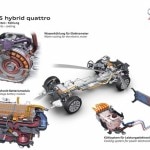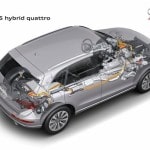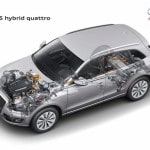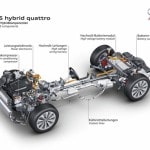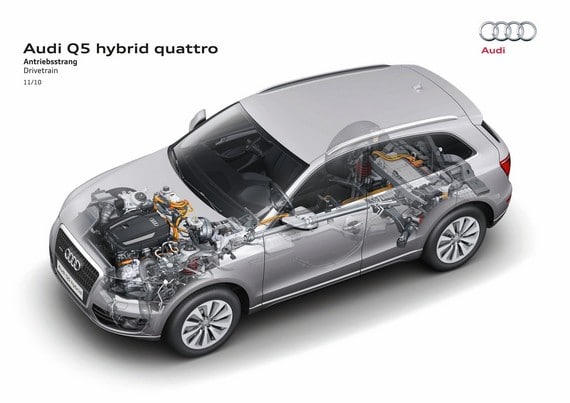
After reviewing the range yesterday Audi Hybrid, which is made up of the A6, A8 and Q5, today we are going to enter a little in the operation of this system and the elements that integrate it. We are not going to go into much depth because it would give for an encyclopedia in volumes. I anticipate that my first thought if I had one of these cars would be "Let nothing go wrong", which is the same thing I thought when I saw the exploded view of the automatic gearbox of my father's car. Sometimes it is better to be ignorant, we would live happier and with less worries.
Broadly speaking, this system consists of the gasoline engine, which is a 2.0 TFSI, the Tiptronic automatic gearbox that incorporates the electric motor to replace the torque converter and the batteries. All this supported by various auxiliary systems.
The 2.0 TFSI engine that we found under the hood of these three models is not exactly the same as that of one that works only with gasoline, because the engine's auxiliary systems have been adapted to ensure comfort in any situation. Thus, the air conditioning compressor is electrically driven, because if it is driven by the engine accessories belt, we could burn when we did not use the gasoline engine.
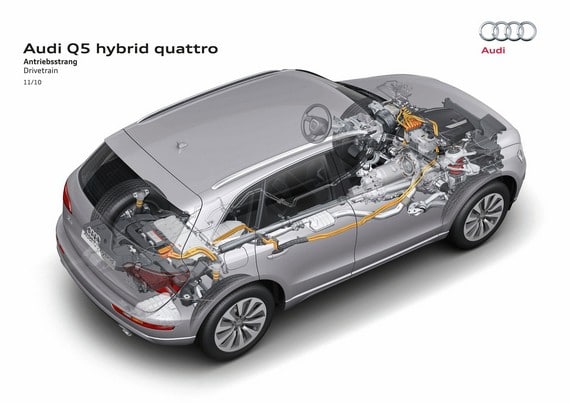
If we go to the eight-speed Tiptronic gearbox, with epicyclic gears (a traditional gearbox) we will see that the torque converter has been replaced by the key piece of this puzzle, the electric motor. The gearbox lubrication pump is electro-hydraulic. This engine does alternator and starter functions, so that the driving of auxiliary systems by means of a belt that we have commented on disappears completely (the direction is electromechanical, so there is no pump to move). As we see absolutely everything in this car works on the basis of "sparks".
The disc-shaped continuous excitation synchronous motor is combined with a oil-bathed multi-disc clutch, which is responsible for coupling or uncoupling the electric motor and the combustion motor. Hybrid models are equipped with an electronic power module with its own cooling system. This module, connected to the battery and the electric motor, acts as an inverter between the direct current of the battery and the alternating current of the motor.
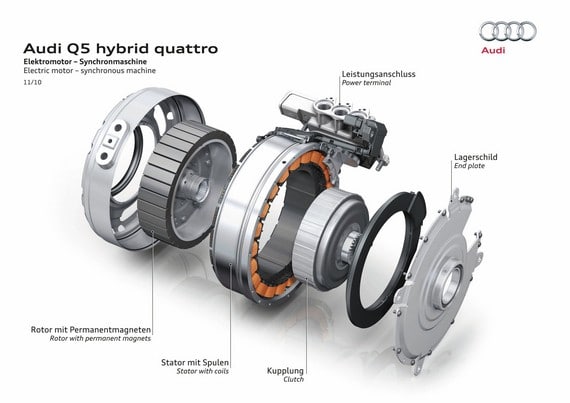
The accumulator of energy, which speaking in Christian is nothing more than the battery, weighs about 35 kilos (there is some variation according to models) and is located in the trunk (hence all models lose load capacity) where it is protected in case of accident. It is lithium ion and has two cooling systems, one that recirculates the air in the cabin through a fan and another that uses a second evaporator dependent on the main air conditioning system.
With all this we can get a rough idea of the complicated mechanical and electrical ins and outs of the A8, A6 and Q5 Hybrid, which thanks to this mountain of technology can scroll in five different operating modes.
- Only with the 2.0 TFSI engine, using gasoline
- Only with the electric motor (with limitations)
- Hybrid with both engines at the same time
- Boost or full throttle mode, for when what is needed is power.
- Recovery mode to recharge the batteries.
With the vehicle in EV mode, priority is given to purely electric operation, especially at low speeds. If we drive in D mode (remember the automatic gearbox) we will try to optimize consumption using both engines, while circulation in S and M modes it has more sporty pretensions, without so much attention to consumption.
When we do a kick down, foot to plate or step on the accelerator, the two motors work together to be able to offer, for a brief moment (approximately 10 seconds) the system's combined 245 hp and 480Nm of torque. As soon as we lift our foot off the accelerator, the electric motor acts as an alternator, thus avoiding power losses during acceleration due to the drag force.
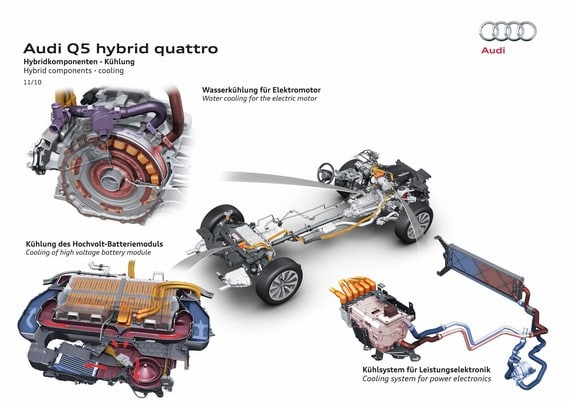
When braking, if we press lightly on the pedal, the electric motor will take care of slowing down, while if we press harder, the conventional hydraulic system will come into play, which in this case has a electrically driven vacuum pump to support the brake booster. The latter is essential, because otherwise it would be impossible to brake when the TFSI was off and no vacuum was generated.
Via the intelligent control system, or at will where possible, all three Hybrid models can travel for 3 km at a constant speed of 60 km/h purely electrically. Also without consuming gasoline it is possible reach 100 kilometers per hour.
After all this theory, which is always the least liked, I say that we will have to see how these models behave in practice. Stay tuned so you don't miss the dynamic tests.
